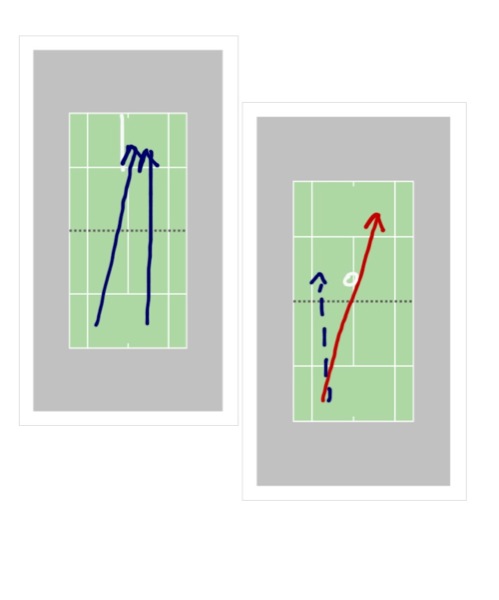Steal This Drill: Deep Game Variation
 Friday, January 6, 2012 at 08:57AM
Friday, January 6, 2012 at 08:57AM  CAtennis
CAtennis  Here's a simple drill for improving one's depth on his or her groundstrokes (credit: the original form of the drill was learned from Peter Smith, current USC coach). At the risk of sounding sexist, this is a particularly useful drill for girls/women because they tend to rely more on depth and penetrating shots to win points whereas men tend to create more openings with spins and angles. Nevertheless, all players can be better off by learning how to master deep shots that land just inside the baseline.
Here's a simple drill for improving one's depth on his or her groundstrokes (credit: the original form of the drill was learned from Peter Smith, current USC coach). At the risk of sounding sexist, this is a particularly useful drill for girls/women because they tend to rely more on depth and penetrating shots to win points whereas men tend to create more openings with spins and angles. Nevertheless, all players can be better off by learning how to master deep shots that land just inside the baseline.
The rules are as follows: a line is drawn/taped about 6ft inside of the baseline. The player practicing hitting deep has 3 opportunities (i.e., 3 balls) to hit 20 shots inside of the "deep" area. For any ball landing in this area, the player get "+1". For every ball landing between this area and the service line, the player gets a "-1". If the player hits inside of the service line, the player goes back down to 0 (this being the variation on the original drill). If the player is already at 0 or in the negatives and hits inside of the service line, that shot is a "-1". If the principal misses wide or deep, the shot does not count [DNC in the diagram]. If the practices partner misses, than the players re-do the point.
The players rally until either the principal (i.e., the player practicing hitting deep shots) makes it to +20 or -10. In case of the latter, the principal runs a sprint. The practice partner's job is to be steady and consisent. This is not as much of a movement drill as it is a ball control drill. The principal should be given ample opportunities to make the ball so the practice partner's role is to chase down all the shots and put them back deep and with a decent amount of pace. The practice partner should vary his spins and force the principal to aim deep even on the most diffuclt shots. Try this as a warm-up drill and let us know how it works.




